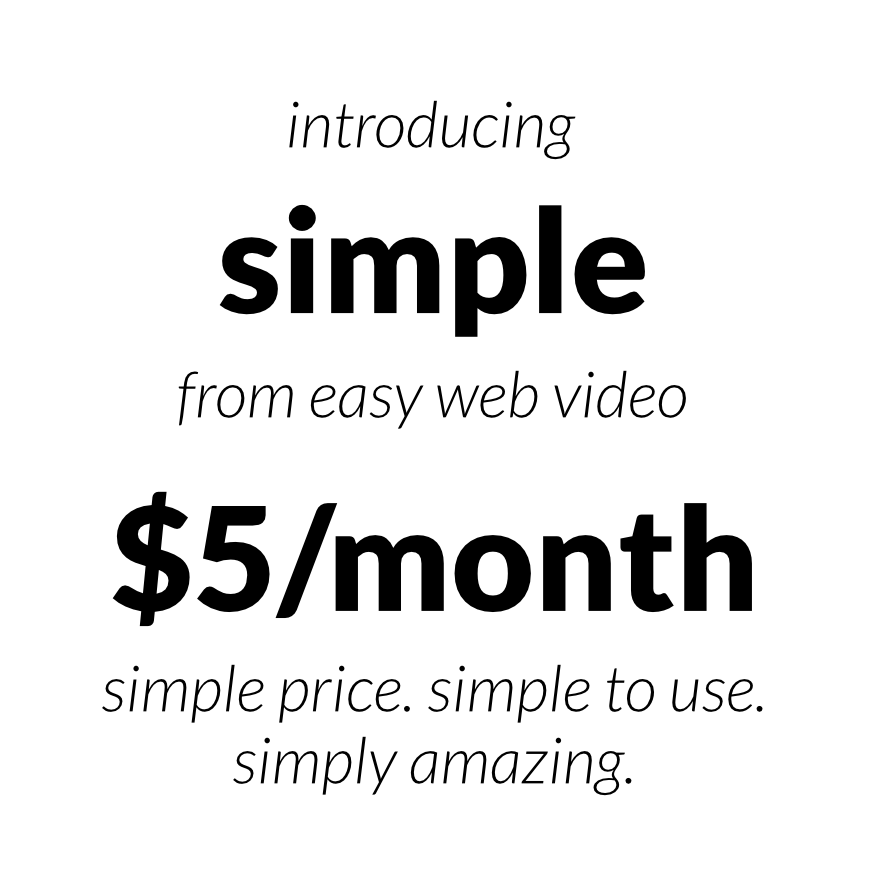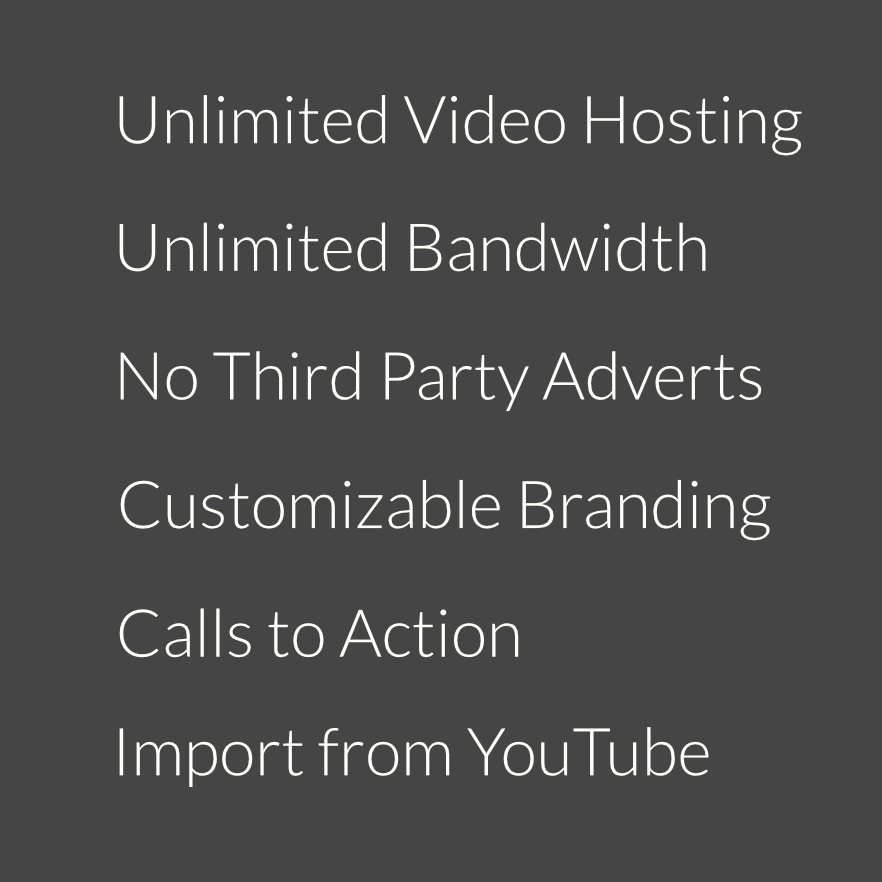“But Charli…” you might be thinking, “editing seems really time-consuming. Can’t I just hit record, talk to the camera, and upload the file as it is?”
Well, yes. You could. But with a small amount of effort you could make your video more engaging, with a better pace. In this article, I’m going to share some simple tips for editing videos that will be useful no matter what software you edit with and will help you feel more confident approaching the editing process. Sound good? Let’s get into it.
What Video Editing Software Should I Use?
This is always one of the first questions a newbie video content creator will ask, so I thought we might as well tackle it first. The answer is: whatever software you have access to and feel most comfortable with. We could debate until the cows come home about the benefits of Adobe Premiere Pro over Final Cut Pro X, but honestly, the only thing that matters when you’re getting started is that you choose a tool and get to know it.
Here’s a list of some of some popular video editing software to get you started:
- iMovie: This editing tool comes with Apple computers and is designed to be super easy to use. You may not be able to do super complex things with it, but it does everything you’ll need when you’re starting out.
- Hitfilm Express: This is free video editing software that works on Mac or Windows. You can purchase well-priced add-ons for things like color grading and effects when you want to get a little fancier.
- Adobe Premiere Elements: A basic version of Premiere Pro, this software has everything you need for getting started with video editing and costs $79.99.
- Adobe Premiere Pro: Premiere Pro comes as part of Adobe Creative Cloud, so if you already have a subscription you’ll be able to simply add it through your Creative Cloud app. If you don’t it will cost $29.99 per month for access to just Premiere Pro, or $49.99 for access to all Creative Cloud apps. It’s available on both Mac and Windows and it is a very robust piece of software used by both beginners and professionals.
- Final Cut Pro X: Available on Mac operating systems only, Final Cut Pro is used by many video editing professionals. Its price at $299.99 may mean it’s not the ideal software to start out with, but the editing flow using it is similar to iMovie. So if you start with iMovie, it will make for an easier transition to Final Cut Pro later on.
As you improve your video editing capabilities and get more confident you might find your current tool lacking, and that’s when you can dive in to research something new. But for now, choose a piece of software you’ve used before, that a friend uses (you’ll be able to ask them for help!), or that you have access to without forking out hundreds of dollars.
Just like with filming gear, stick with the basics for now and save the investing for later on when you know for sure this is something you want to keep doing.
The Basics of Video Editing
On a basic level, video editing is taking footage, cutting it up, removing the pieces you don’t want, and keeping the pieces you do. Back in the old days, this was done by literally slicing film reel and piecing it together. Thankfully software makes the whole process a lot easier (with much less risk of messing up your footage!).
Now obviously the level of editing a video requires will depend on its format. A vlog á la Casey Neistat will require precision editing and well-planned timing of the footage to music, whereas a ‘talking head’ video needs much less.
In either case, however, the premise is the same: cutting away all the footage you filmed that doesn’t fit with the story you have in mind for your final video, and arranging the footage that’s left in the right order.
There are three main jobs video editing needs to do:
- Removing mistakes
- Keeping the video moving at an engaging pace
- Inserting supporting footage or titles
These three points could be seen as a checklist for you to walk through as you edit, so grab your footage and let’s dig into each one a little deeper.
The Video Editing Process
The first thing to do when you begin a new edit is open up a fresh file in your editing software and drag your footage in. It’s good to get into a habit of being very tidy with your footage, so ideally you’d have it stored on your computer in the same folder as you save your working edit file.
If you move your footage around you’ll likely need to re-link it in the software, as the program will need to ‘read’ the footage from the original file. If you move or delete it you’ll end up with ‘missing footage’ error messages in your working file, so just keep things tidy and you’ll be fine!
Now let’s get into what to do with your footage once you have it imported into your editing software.
Removing Mistakes and Keeping Only the Best Footage
Even the most seasoned video content creators won’t always say everything perfectly on the first take, and in fact, knowing that you can edit out mistakes later makes filming a lot less stressful!
On your first pass of editing, you’re looking for your best takes and cutting away any footage that isn’t meant to be there– like the start of a clip where the camera is still pointing down at your feet or any long pauses.
Think of this first edit like doing a rough sketch in pencil before you start painting. It will give you an idea of how long your final video will be, and you’ll have all the pieces in place to start fine tuning and adding detail.
Pro Tip: To speed up this part of the process, learn the keyboard shortcuts to get the tool for cutting footage and for moving footage around in your chosen editing software. Trust me, those precious seconds saved from pressing a key rather than moving your mouse over to the toolbar will all add up, especially if you’re trying to keep to a regular content schedule.
Tightening up the Edit to Keep Viewers Engaged
Some people would call an edit done after the first stage of cutting and arranging footage, but after four years of making videos every single week for my own YouTube channel let me tell you something I learned the hard way: there is always something you miss on the first pass! So going through your video edit a second time is a good idea.
On my second pass through an edit I’m not only looking out for any mistakes or awkward pauses at the start of a clip that I missed the first time around, but I’m also asking myself “Is this essential?” about every single clip.
Viewer Perspective
Think from a viewers perspective: if you’re rambling or if that vlog shot of you making coffee is going on too long, they’re going to get bored and stop watching. Keep them engaged by making sure every single second in your video serves a purpose. Be harsh with yourself here!
That doesn’t mean you can’t include shots purely for aesthetic reasons– those clips are serving a purpose of being visually pleasing. But keep them to only a few seconds each. Keep your editing tight and purposeful, and you’ll keep your viewers attention.
Transitions
Depending on what style of video you’re going for, you might want to consider adding transitions in at this stage too. Be careful with these as they can easily feel cheesy, but a good rule of thumb is to only use one when changing ‘chapters’ in your video or changing location.
If you put a slide-in or fade transition between every clip of a talking-head video your audience will get sick of it fast. However, if you’re changing topic, sliding to a new clip is a good way to visually signal the change.
Adding Titles and Supporting Footage
Titles and ‘B-roll’ (supporting visual footage), can be a great way to add a layer of professional polish to your videos, and they can also help keep the pace of a video moving.
Text on the screen saying the name of the video or the day of the week or location in a vlog can help add context. And if you’re editing a video where you’re running through a list of points, having those points appear on screen as you say them is a great way to add visual interest. Not only could it help the points sink in for your viewer, but it keeps the pace moving because they’re seeing something slightly different on screen.
‘B-roll’ is named as such because it is not the main essential footage that tells the story, but it can give context to what you’re saying and add visual interest. If you’re talking about your workflow, for example, you could insert some shots of yourself working at your desk. And in a vlog, some B-roll shots filmed walking down the street or getting into a cab can help indicate a change of location without you having to say it.
Just like you’d layer paint on a canvas or images in Photoshop, you can layer video footage too. Most editing software works on a timeline and you’ll have your main footage on the first row of the video and audio timeline, with titles and supporting footage above it. Background or transitional music can be added on a second layer in the audio section too.

Once you’ve added any last final touches, it’s time to watch your edit back one last time then click export! You’re done. You’ve edited a video that’s ready to be seen by the world. That wasn’t so hard, was it?
But What About Color Grading and Other Fancy Things Like That?
The truth is, you don’t need to worry about them for a basic edit. It’s much more important to focus on the pace of a video and making sure each shot is essential than it is to focus on the colors of your footage.
You could have the most lovely looking footage in the world, but if it’s boring to watch then your viewers won’t stick around. That’s the harsh truth. So don’t worry about anything else for now. Once you feel confident editing there will be lots of other things you can learn and improve on, but as always, you should start by nailing the basics first.
I hope that outlining this process has made you feel less daunted by video editing and that it’s something you’re ready to take on. Choose your software, and get into it!
This article was originally posted on ConvertKit







